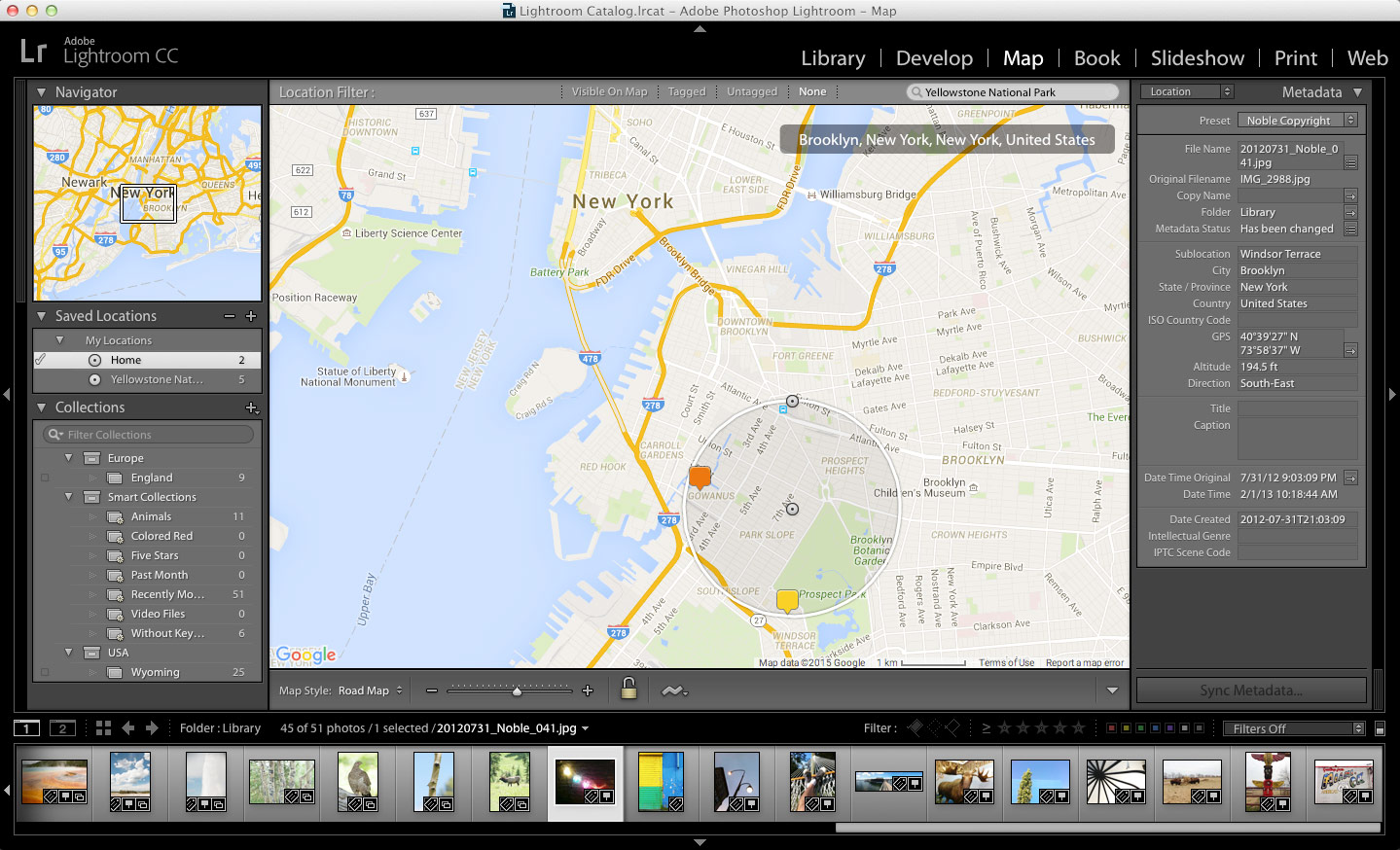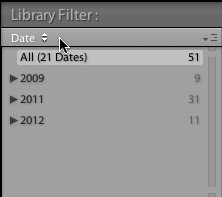Learn how to efficiently organize your photos by location with Lightroom’s Map Module. This tutorial covers how to map photos with and without embedded GPS, and how to create and save specific locations for easy access and organization.
Key Insights
- The Lightroom tutorial teaches users how to map photos with embedded GPS by selecting the appropriate photo, finding the GPS data in the Metadata panel, and using the Map module to see the photo's location.
- Photos without GPS coordinates can also be organized using the Lightroom Map module by manually searching for the desired location and dragging the photos onto the corresponding location on the map.
- The tutorial explains how to select multiple photos and assign them to a specific location on the map, aiding in the organization of large photo libraries.
- The author provides steps to create and save locations in the Map module, allowing users to quickly navigate to and view photos from specific areas.
- Users can also filter their photos by location in the Library Filter bar, making it easier to find photos taken at a specific location.
- Overall, the tutorial provides a comprehensive guide to using the Map module in Lightroom, significantly improving the ease of photo organization and location-based browsing.
Dive into the extensive Lightroom tutorial covering essential topics like mapping photos with and without embedded GPS and creating & saving locations.
This exercise is excerpted from Noble Desktop’s past Lightroom training materials and is compatible with Lightroom updates through 2020. To learn current skills in Lightroom, check out our Photo Retouching Certificate and graphic design classes in NYC and live online.
Topics Covered in This Lightroom Tutorial:
Mapping Photos with Embedded GPS, Mapping Photos Without Embedded GPS, Creating & Saving Locations
Exercise Preview

Exercise Overview
In this exercise, you will learn how to organize photos by location using Lightroom’s Map Module.
Mapping Photos with Embedded GPS
If you have not completed the previous exercises (1A–1E), do them before proceeding with this exercise.
-
In the Folders panel on the left, select the Library folder.
Some of the photos in the Library were taken with an iPhone. Photos taken with iPhone, and most other mobile devices, include GPS coordinates. The GPS icon
 is found on the bottom right of photos with GPS coordinates.
is found on the bottom right of photos with GPS coordinates. Scroll to the bottom of the Library to see the photos that have GPS coordinates. They will have the GPS icon
 on the bottom.
on the bottom.Select the totem pole photo (20121227_YourName_050).
The Metadata panel located in the right side panels (you may have to scroll down to see it) will list the GPS data. Expand the Metadata panel if it isn’t already.
Towards the bottom of the Metadata panel, find the GPS box to see the GPS coordinates that were recorded by the iPhone.
Click the arrow
 to the right of the GPS coordinates to switch to the Map module and see the location on a Google map (you need an internet connection to use it). This feature is a little buggy on Windows. If you don’t see a map and you are connected to the internet, close and restart Lightroom. Then repeat the steps above.
to the right of the GPS coordinates to switch to the Map module and see the location on a Google map (you need an internet connection to use it). This feature is a little buggy on Windows. If you don’t see a map and you are connected to the internet, close and restart Lightroom. Then repeat the steps above.The yellow pin on the map is where the photos were taken, in this case Oklahoma. Hover over the yellow pin to view the photographs. Click the left/right arrows to scroll through the photos.
Underneath the map, notice there is a zoom slider with a minus and plus button to the left and right. You can use this to adjust the zoom level on the map, but there’s a much easier way to zoom in on a specific location on a map.
Hold down the Opt (Mac) or ALT (Windows) key and drag a box around the yellow pin to zoom in on it.
To the left of the zoom slider, from the Map Style menu, choose Satellite to view satellite images of this location. Feel free to play with the different Map Styles.
Mapping Photos Without Embedded GPS
What do we do when we have photos that don’t have GPS coordinates embedded and we want to organize them using the map?
At the top right of the map, in the search bar type Yellowstone National Park.
Hit Return (Mac) or Enter (Windows) to initiate the search.
A yellow pin is dropped onto the map at the general location of Yellowstone National Park.
We’ll select the photos we want to add GPS coordinates to using the Filmstrip panel at the bottom of the screen. If you don’t see the Filmstrip panel, go to Window > Panels > Show Filmstrip.
In the Filmstrip panel, mouse over one of the photos and notice the name of the photo shows up at the top of the panel.
Find the first Yellowstone photo (20110827_YourName_032, the one right after the moose). Click on it to select it.
-
There are four more Yellowstone photos to select. Shift–click on the last one, which depicts Old Faithful geyser erupting (20110827_YourName_036).
A total of five photos should be selected.
Making sure to start dragging from one of the photos and not the gray area around the photos, drag the photos onto the map over the yellow pin and let go.
If a window opens asking if you want to Enable address lookup, click Enable.
A new pin will be added. Notice the number of pictures attached to the pin, 5, appears on the pin. Mouse over the pin to see the photos that were added (you may need to click on it first).
At the top right of the map in the Search Bar type Alfriston, UK.
Hit Return (Mac) or Enter (Windows) to initiate the search.
In the Filmstrip panel, find the first church photo (20090503_YourName_006) and click on it to select it.
Cmd–click (Mac) or CTRL–click (Windows) the rest of the photographs of the church (20090503_YourName_007 and 20090503_YourName_008).
Making sure to start dragging from one of the photos and not the gray area around the photos, drag the photos onto the map over the yellow pin for Alfriston and let go.
Zoom out until you see a map of the whole world with pins for the locations where the pictures have been taken.
Click on, then mouse over the pins to see the photographs that were taken in each location. Awesome!
Creating & Saving Locations
At the top right of the map, in the search bar type New York, NY.
Hit Return (Mac) or Enter (Windows) to initiate the search.
At the bottom left of the map, from the Map Style menu, choose Road Map.
Zoom in on the map until some of the street names become visible.
Drag the map around so Manhattan is on the far left.
In the Saved Locations panel, click the Create New Preset icon
 .
.- In the New Location window:
- For Location Name type Home.
- From the Folder menu, choose My Locations.
- Change Radius to 1.0 (by either using the slider or typing 1.0 in the text box).
- Click Create.
Notice a transparent circle has appeared on the map, with two dots: one in the middle and one on the edge of the circle.
Drag the middle dot to move the circle to your home on the map (or if you don’t live in NYC, choose a nice neighborhood you’d like to live in.)
Drag the dot on the edge of the circle to make the location smaller or larger depending on your preference.
At the top right of the map, in the search bar type Yellowstone National Park.
Hit Return (Mac) or Enter (Windows) to initiate the search.
On the left, next to Saved Locations, click the Create New Preset icon
 .
.- In the New Location window:
- For Location Name type Yellowstone National Park.
- From the Folder menu, choose My Locations.
- Change Radius to 33.0.
- Click the Create button.
In the Saved Locations panel, notice the new locations are now saved inside the My Locations folder.
Mouse over the Home location, and click the arrow
 to the right of a location name to jump to that location on the map.
to the right of a location name to jump to that location on the map.Press G to return to the Library.
In the Library Filter bar at the top of the Library, click on Metadata.
-
As shown below, mouse over the top of the first column to reveal a menu.

Click on the menu and choose Map Location to filter photos by Location.
Click Yellowstone National Park to see all photos in that Location.
Click the GPS icon
 on the bottom right of any of the photos to go to that location on the Map. Cool!
on the bottom right of any of the photos to go to that location on the Map. Cool!



